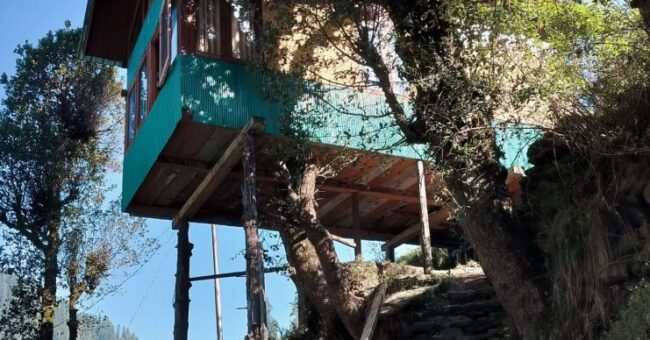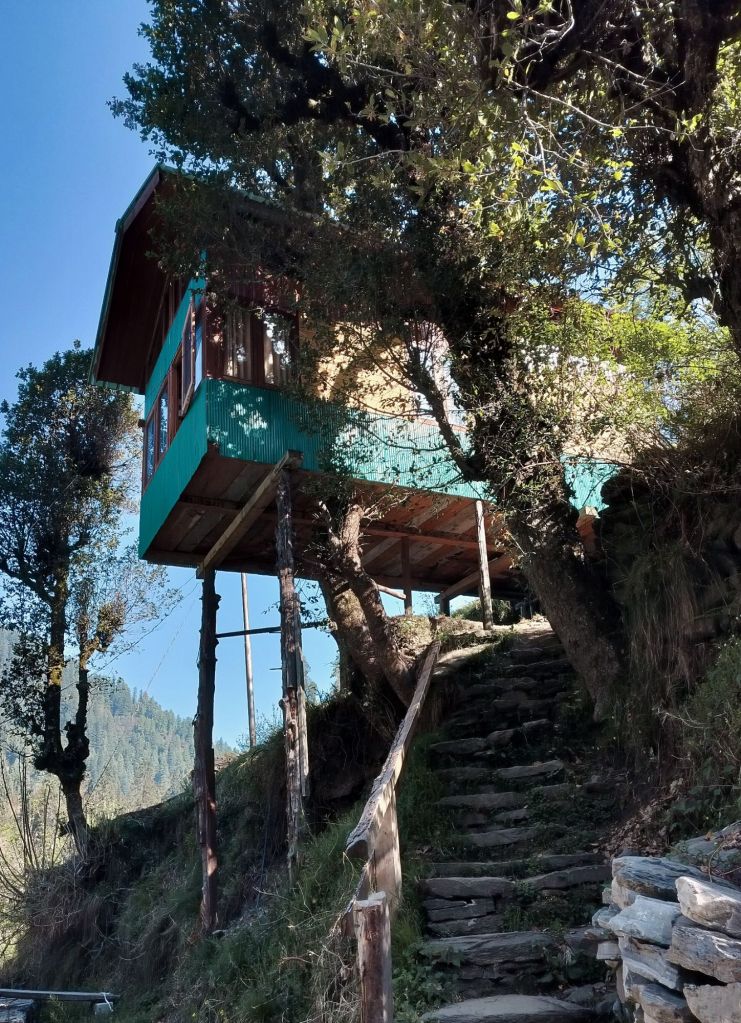
What if I lose everything I have? What if I am left with nothing—no money, no home, no possessions, not even a relationship? These are the kinds of questions that can quietly unsettle us. Though they may not always be at the forefront of our minds, such thoughts often linger somewhere in the background, quietly shaping the choices we make. We might cling to jobs we no longer enjoy, or remain in relationships that have long turned sour—all because of an underlying fear consisting of a series of what-ifs. It is this fear that keeps us from exploring the possibilities that lie beyond what is familiar and safe.
What should you do when faced with such fears? Thankfully, as often happens on Kalampedia, literature comes to our rescue. This time, we’ll go all the way back to 12th and 13th century Japan, where the great Japanese monk and poet Kamo no Chomei will show us the way.
About Kamo no Chomei
Kamo no Chomei was born in 1155, second son of Kamo-no-Nagatsugu, who held the rank of a priest at the Kamo Shrine in north-eastern Kyoto, which was the capital at that time.
From an early age, Kamo no Chomei’s life was shaped by his love for music and poetry. Born into a family expected to serve at the prestigious Kamo shrines, Chomei found comfort in the arts, feeling free to pursue his passions while still managing important duties at the royal court. In his twenties, his poetic talent blossomed, earning him recognition as several of his works were published in royal anthologies. The praise he received from renowned poets of his time only deepened his commitment to his craft.
Yet, Chomei’s path was not always smooth. Difficult relationships with his peers and a series of natural disasters brought hardship into his life. Eventually, he lost his official position and much of his wealth, forcing him to move from one home to another, each smaller than the last. In time, he chose to settle in a tiny, ten-foot-square hut somewhere in the mountains. It was here, surrounded by nature and solitude, that Chomei composed his famous work, Hojoki. Through his experiences, he offers a powerful answer to a question many of us dread: what happens if we lose everything we have? Chomei proves that even after great loss, it is possible to find peace and live a good life.
Hojoki: Meditating in a Ten-Foot-Square Hut

In this short but powerful work (Hojoki), Chomei describes his decision to leave behind the chaos of city life and retreat to a simple hut in the mountains. Through vivid descriptions and thoughtful reflections, Hojoki explores themes of impermanence, contentment, and the search for true happiness. It remains a timeless guide for anyone seeking meaning in an uncertain world.
Now, let’s meditate with Chomei to find our answers. I will also share a few quotes from the book to better illustrate the underlying philosophy.
Life is transient
Chomei begins by drawing an ancient comparison between human life and a river. He says:
The flowing river
never stops
and yet the water
never stays
the same.
Foam floats
upon the pools,
scattering, re-forming,
never lingering long.
So it is with man
and all his dwelling places
here on earth.
We are like bubbles on water—appearing suddenly in this vast cosmos, only to vanish just as quickly into oblivion. Our time here is brief, lasting just a few moments. Doesn’t that make it all the more special?
Attachments in the light of transient nature
Chomei gives a number of examples of how things appear and disappear and how we have no control over them. For instance, he says:
Great houses fade away,
to be replaced by lesser ones.
Thus too those
who live in them.
Everything gets replaced—it’s just a matter of time. Houses come and go, and so do the people who reside in them. With this in mind, does it really make sense to become deeply attached to material things, or even to people? After all, everything will eventually be gone; some things simply leave sooner than others. So, is it wise to keep mourning our losses? Wouldn’t it be better to celebrate life while we still have it? The ways we choose to celebrate may be different, but as long as we’re willing to embrace life, there are endless ways to make it meaningful.
Happiness outside the material wealth
So often, we get caught up in society’s ideas of what a good life should be and where happiness should come from. But Chomei helps us step outside this bubble and see beyond the usual human struggles. He invites us into the forest, where nature can heal us. He teaches us the value of silence. He shows us that if we let go of society’s expectations and follow our own path, we can find happiness in simplicity.

This happiness—and the beauty of the world—are always within our reach. Chomei does what he can with what is available to him.
When the mood takes me,
again and again, I play
the “Song of Autumn Breezes”
to the wind in the pines
or “Flowing Water”
to the sound of the stream.
Though little skilled
I do not play
to please another’s ear.
I play just for myself
and sing to give sustenance to my own heart.
That sounds simple enough, doesn’t it?
When there are no resources
If we lose all our resources, life will surely become difficult. Where will you live if you don’t have a house? How will you travel if you don’t have a car? How will you survive without money? Chomei faced all these challenges and showed how to overcome them by his own example. He built a small bamboo hut for himself, relied completely on natural resources, and made sure to use his body and mind to make the best of everything he found.
Here is an example:
Now, I divide my body
and I give it twofold purpose.
My hands are my servants,
my legs my carriage.
This suits me well.
My heart knows
my strength’s limit,
and makes me rest when I am tired.
I work again when ready.
I exert myself,
but never to excess.
So even when fatigued,
I’m not distressed.
Always walking,
always working
makes the spirit strong.
It makes sense, right? We can be gentle towards our bodies and at the same time make the best use of them. It certainly brings a sense of calm.
A minimalist lifestyle
We don’t really need much. As Chomei reminds us, a life with just the basics can still be deeply fulfilling. He writes:
I know my needs
and know the world.
I wish for nothing
and do not work
to acquire things.
Quiet is my only wish,
to be free from worry
happiness enough.
People in the world
do not build houses
to suit their real needs.
They build houses
for wives, children, retinues.
Or they build for friends
and those around them.
Some build houses
for masters and teachers.
And even for their treasures,
oxen, horses.
I have built for myself,
alone.
Know thyself. That is the message here. If you are happy in a hut, why build a castle? Only to please others? That does not sound sensible. It’s a simple message, but we so often ignore it. Finding happiness is not as complicated as we often make it to be. And that is what Chomei showed us by living in a small bamboo hut till the end of his life.
Reference books:
Hojoki by Kamo no Chomei